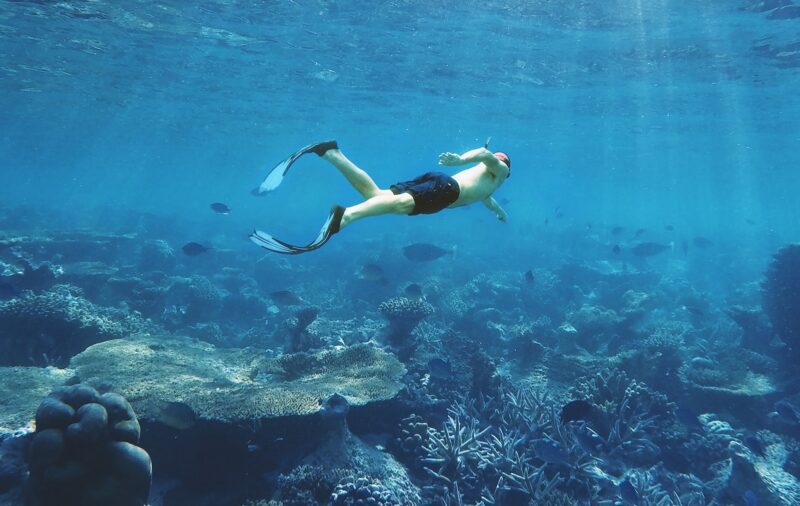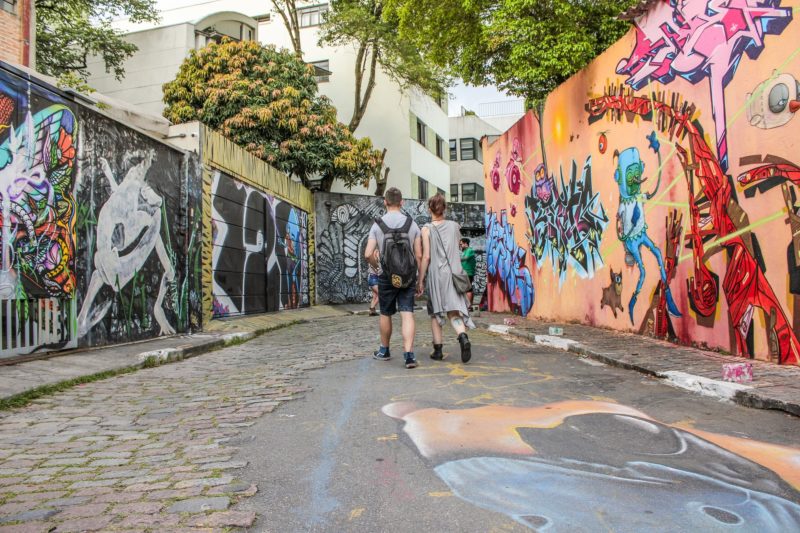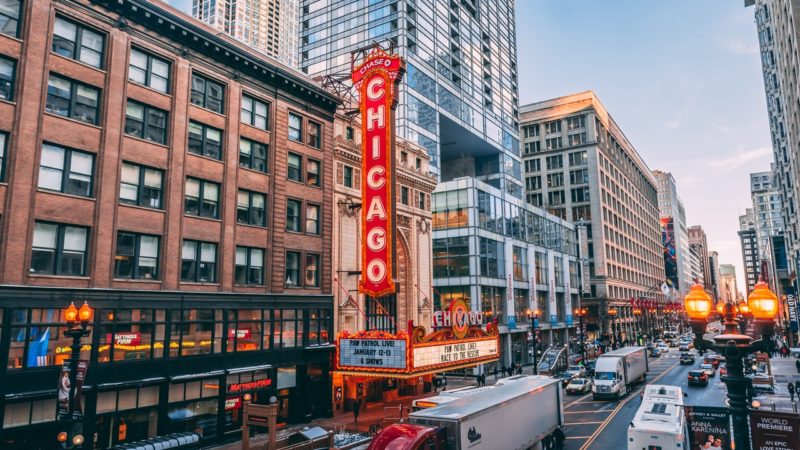Traveling is an enriching and exciting experience that allows people to explore new cultures, visit historical landmarks, and broaden their horizons. However, for individuals with disabilities, travel can be challenging due to accessibility barriers. Accessible travel, also known as inclusive tourism, aims to provide equal opportunities for everyone to enjoy travel experiences, regardless of their physical, sensory, or cognitive abilities. In this comprehensive guide, we’ll delve into the world of accessible travel, its history, benefits, and how to plan an accessible trip.
What Is Accessible Travel?
Accessible travel refers to the practice of designing and providing travel experiences that cater to the needs of people with disabilities. It encompasses various aspects of travel, including transportation, accommodation, attractions, and activities. The goal is to create an inclusive environment where people with disabilities can participate in and enjoy travel experiences without facing unnecessary obstacles or discrimination.
Accessible travel is essential for several reasons. Firstly, it promotes social inclusion by ensuring that people with disabilities can participate in and enjoy the same experiences as others. Secondly, it supports the fundamental human rights of people with disabilities, as outlined in international conventions such as the United Nations Convention on the Rights of Persons with Disabilities (UNCRPD). Lastly, accessible travel benefits the tourism industry by tapping into a growing market segment, as more and more people with disabilities choose to travel.
The History of Accessible Travel
The history of accessible travel can be traced back to the early 20th century when the first efforts were made to accommodate the needs of disabled war veterans. However, it wasn’t until the 1960s and 1970s that the disability rights movement gained momentum, leading to significant changes in society’s attitude towards people with disabilities. The establishment of the Architectural Barriers Act of 1968 in the United States was an important milestone, as it required that buildings financed with federal funds be accessible to people with disabilities.
Over the years, accessible travel has continued to evolve, with more countries adopting legislation to promote accessibility in various aspects of daily life, including transportation and public spaces. The adoption of the UNCRPD in 2006 was a major milestone, as it recognized the right of persons with disabilities to participate in cultural life, leisure, and tourism on an equal basis with others.
The Role of Legislation and Advocacy
Legislation and advocacy have played a crucial role in the advancement of accessible travel. Laws like the Americans with Disabilities Act (ADA) in the United States and the European Accessibility Act have mandated accessibility standards for public transportation, accommodations, and tourist attractions. These regulations have not only improved accessibility for people with disabilities but have also raised awareness about the importance of inclusive tourism.
Advocacy groups, such as the World Institute on Disability and the European Network for Accessible Tourism (ENAT), have also been instrumental in promoting accessible travel. They work to raise awareness, provide resources, and collaborate with governments and the tourism industry to improve accessibility standards and practices.
Legal Framework for Accessible Travel
The United Nations Convention on the Rights of Persons with Disabilities (UNCRPD) is the primary international legal instrument that addresses the rights of people with disabilities, including their right to participate in cultural life, leisure, and tourism. Adopted in 2006, the UNCRPD has been ratified by more than 180 countries, making it one of the most widely accepted human rights treaties.
The UNCRPD requires that countries take appropriate measures to ensure that people with disabilities have equal access to transportation, accommodations, and tourist attractions. This includes providing information in accessible formats, training tourism professionals on accessibility issues, and ensuring that new tourism infrastructure is accessible.
Many countries have enacted national laws and regulations to promote accessibility in various aspects of daily life, including travel. Some of the most notable examples include:
- The Americans with Disabilities Act (ADA) in the United States, which mandates accessibility standards for public transportation, accommodations, and tourist attractions.
- The European Accessibility Act, which aims to harmonize accessibility requirements across European Union member states for various products and services, including transportation and tourism.
- The Disability Discrimination Act (DDA) in the United Kingdom, which prohibits discrimination against people with disabilities in the provision of goods, services, and facilities, including tourism services.
These laws and regulations not only help to ensure that people with disabilities can access travel experiences on an equal basis with others but also serve as a framework for the tourism industry to adopt best practices in accessible travel.
The Benefits of Accessible Travel
Accessible travel provides numerous benefits for people with disabilities, such as:
- Increased independence and self-confidence: Accessible travel experiences allow people with disabilities to explore the world independently and develop self-confidence in their abilities.
- Improved quality of life: Travel can enhance the overall well-being of people with disabilities by providing new experiences, social connections, and opportunities for personal growth.
- Expanded social inclusion: Accessible travel helps break down barriers and foster understanding between people with disabilities and the wider society.
The tourism industry also stands to benefit from embracing accessible travel, as it:
- Expands market opportunities: With approximately 15% of the world’s population living with some form of disability, accessible travel represents a significant and growing market segment.
- Enhances customer satisfaction: By catering to the needs of people with disabilities, businesses can improve overall customer satisfaction and generate positive word-of-mouth.
- Fosters innovation: Developing accessible travel solutions can inspire innovation and lead to the creation of new products and services that benefit all travelers, not just those with disabilities.
Types of Disabilities and Accessibility Needs
Mobility Impairments
Mobility impairments include a wide range of conditions that affect a person’s ability to move, such as paralysis, amputations, and arthritis. Travelers with mobility impairments may require accessible transportation options, such as wheelchair ramps, lifts, and spacious seating areas. In addition, they may need accommodations with features like roll-in showers, grab bars, and lowered counters.
Visual Impairments
Visual impairments range from partial vision loss to complete blindness. Travelers with visual impairments may require information in alternative formats, such as large print, braille, or audio descriptions. They may also benefit from tactile maps and wayfinding aids, as well as assistance from trained staff at tourist attractions and transportation hubs.
Hearing Impairments
Hearing impairments include partial hearing loss and deafness. Travelers with hearing impairments may require assistive listening devices, such as hearing loops, as well as visual or vibrating alerts for alarms and announcements. They may also need access to sign language interpreters or captioning services for guided tours and performances.
Cognitive Disabilities
Cognitive disabilities encompass a variety of conditions that affect memory, learning, and problem-solving, such as autism, Down syndrome, and dementia. Travelers with cognitive disabilities may require clear and simple information, visual supports, and a predictable routine during their trip. They may also benefit from quiet spaces and sensory-friendly environments at tourist attractions and accommodations.
Planning an Accessible Trip
Researching Destinations
Thorough research is crucial when planning an accessible trip. Start by gathering information on the accessibility of your desired destination, including local transportation options, accommodations, and tourist attractions. Online resources, such as travel blogs, forums, and official tourism websites, can provide valuable insights into the accessibility of a specific destination.
Booking Accommodation
When booking accommodation, look for properties that explicitly state they are accessible or have accessible rooms. Make sure to contact the property directly to confirm the availability of specific accessibility features, such as roll-in showers, grab bars, or visual alerts. Additionally, ask for detailed information on the property’s layout, including the location of elevators, ramps, and accessible parking spaces.
Arranging Transportation
Accessible transportation options vary widely depending on the destination. When planning your trip, research the accessibility of different transportation modes, such as trains, buses, and taxis. If flying, notify the airline of your specific accessibility needs in advance and familiarize yourself with their policies regarding assistive devices, service animals, and seating arrangements.
Accessible Accommodation
What to Look for in Accessible Hotels
When searching for accessible hotels, consider the following features:
- Clearly stated accessibility information: Hotels should provide detailed information about their accessibility features on their website or through direct communication.
- Accessible entrances and common areas: Look for hotels with ramps, automatic doors, and spacious lobbies that can accommodate wheelchairs or other mobility aids.
- Accessible rooms: Ensure the hotel offers accessible rooms with features such as roll-in showers, grab bars, lowered counters, and visual or vibrating alerts for alarms and doorbells.
- Elevators: Confirm that the hotel has elevators to access different floors and that they are large enough to accommodate mobility aids.
- Accessible parking: If you plan to use a car, check whether the hotel has accessible parking spaces close to the entrance.
Alternative Accessible Accommodation Options
Hotels are not the only option for accessible accommodation. Consider the following alternatives:
- Vacation rentals: Many vacation rental platforms, such as Airbnb and Vrbo, offer accessible properties with features like ramps, wide doorways, and accessible bathrooms.
- Bed and breakfasts: Some bed and breakfasts have accessible rooms or ground-floor accommodations suitable for travelers with disabilities.
- Hostels: Many hostels now offer accessible private rooms or dormitories with ensuite accessible bathrooms.
Accessible Transportation
Air Travel
Air travel can be challenging for people with disabilities, but airlines are required by law to accommodate travelers with disabilities. Some tips for accessible air travel include:
- Notify the airline of your specific accessibility needs at the time of booking and reconfirm them 48 hours before departure.
- Arrive early at the airport to allow for additional time for check-in, security, and boarding.
- Familiarize yourself with the airline’s policies regarding assistive devices, service animals, and seating arrangements.
Train Travel
Many train operators offer accessible services for travelers with disabilities, such as:
- Accessible train cars with designated spaces for wheelchairs and priority seating for people with disabilities.
- Assistance with boarding and disembarking, including the use of portable ramps or lifts.
- Accessible stations with ramps, elevators, and tactile or audio wayfinding aids.
Public Transportation
Public transportation accessibility varies greatly depending on the destination. When planning your trip, research the accessibility of local buses, subways, and trams. Some cities offer fully accessible public transportation systems, while others may have limited accessibility features.
Accessible Car Rentals and Taxis
If you prefer to use private transportation, consider renting an accessible vehicle or using accessible taxi services. Many car rental companies offer vehicles with hand controls, wheelchair ramps, or lifts. Some cities also have accessible taxi services with specially adapted vehicles for travelers with disabilities.
Accessible Attractions and Activities
Assessing Attraction Accessibility
When planning your trip, research the accessibility of popular tourist attractions, such as museums, historical sites, and natural landmarks. Look for attractions that offer:
- Accessible entrances and pathways
- Elevators or ramps for multi-level sites
- Audio or tactile guides for people with visual impairments
- Captioned or sign language-interpreted tours and performances for people with hearing impairments
- Sensory-friendly environments for people with cognitive disabilities
Inclusive Tours and Activities
Many tour operators and activity providers now offer accessible or inclusive options for travelers with disabilities. Examples include:
- Accessible walking or bus tours with knowledgeable guides trained in disability awareness.
- Cultural experiences, such as accessible theater performances, concerts, and workshops, that provide accommodations for people with visual or hearing impairments.
- Accessible wildlife and nature experiences, like accessible national parks or nature reserves with well-maintained trails and viewing platforms.Adaptive sports and recreation activities, such as wheelchair hiking, sailing, or skiing, that cater to individuals with various physical abilities.
Using Technology to Enhance Accessible Travel
Mobile Apps
Numerous mobile apps are available to assist travelers with disabilities in various aspects of their trip. Examples include:
- Wayfinding apps that use GPS technology to provide audio or tactile directions for people with visual impairments.
- Communication apps that facilitate conversation between individuals with hearing impairments and those who do not understand sign language.
- Accessible travel planning apps that provide detailed accessibility information on destinations, accommodations, and attractions.
Assistive Devices
Travelers with disabilities can use various assistive devices to enhance their travel experience, such as:
- Lightweight, portable mobility aids like folding wheelchairs, travel scooters, or rollators.
- Assistive listening devices, such as hearing loops or personal amplifiers, for people with hearing impairments.
- Electronic magnifiers or portable braille displays for people with visual impairments.
Accessible travel, or inclusive tourism, aims to provide equal opportunities for everyone to enjoy travel experiences, regardless of their physical, sensory, or cognitive abilities. By understanding the unique needs of travelers with disabilities and taking proactive steps to address accessibility barriers, the tourism industry can tap into a growing market segment and promote social inclusion. With careful planning and research, people with disabilities can embark on enriching and fulfilling travel experiences that broaden their horizons and enhance their overall well-being.
Frequently Asked Questions (FAQs)
What is accessible travel?
Accessible travel, also known as inclusive tourism, is the practice of designing and providing travel experiences that cater to the needs of people with disabilities. This includes accessible transportation, accommodations, attractions, and activities.
Why is accessible travel important?
Accessible travel is important for promoting social inclusion, supporting the fundamental human rights of people with disabilities, and benefiting the tourism industry by tapping into a growing market segment.
What laws and regulations govern accessible travel?
The United Nations Convention on the Rights of Persons with Disabilities (UNCRPD) is the primary international legal instrument addressing the rights of people with disabilities in the context of travel. Many countries have also enacted national laws and regulations, such as the Americans with Disabilities Act (ADA) and the European Accessibility Act.
How can I plan an accessible trip?
To plan an accessible trip, start by researching the accessibility of your desired destination, including transportation, accommodations, and attractions. When booking accommodation and arranging transportation, communicate your specific accessibility needs and confirm the availability of necessary features and services.
How can technology help with accessible travel?
Technology can enhance accessible travel through mobile apps that provide wayfinding assistance, communication support, and travel planning resources. Assistive devices, such as lightweight mobility aids and personal amplifiers, can also improve the travel experience for people with disabilities.







































